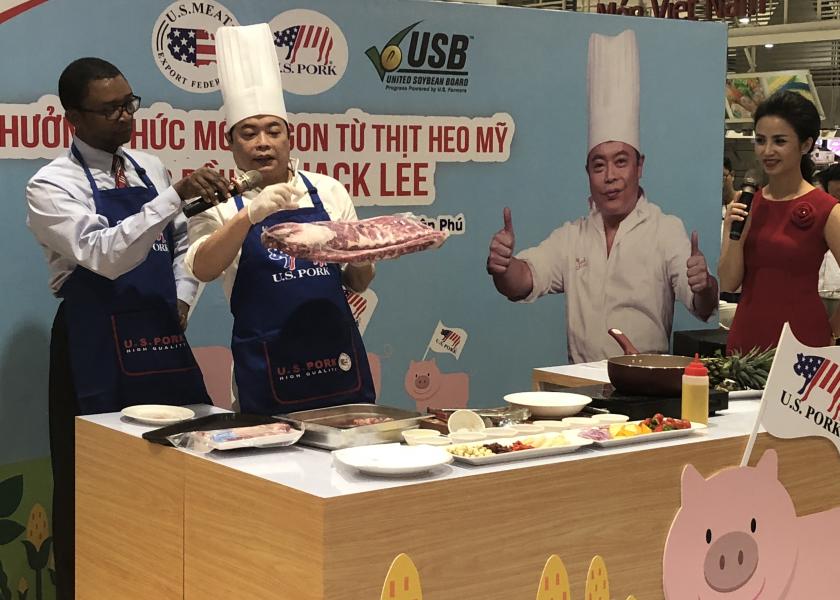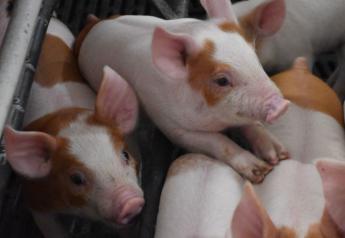How Do We Capture the Most Value for the Supply Chain?

The competition is heating up around the world as more countries look for ways to fill the pork protein gap caused by the after-effects of the deadly African swine fever (ASF) virus.
Brazil is pushing increased volumes of cheap pork out into the world market. With a vast exchange rate advantage in 2020, Rupert Claxton, Gira meat director, says they can’t be discounted. However, few competitors can compare to U.S. pork when it comes to consistency and quality.
“The U.S. has opportunity there, and reputation is very important,” Claxton says. “You can spend 20 years of your life building a reputation, but you do one bad thing and your reputation is gone. So, the important message for the U.S. pork industry is that you are a U.S. industry. And if one rogue player does something under the U.S. brand that's bad, you taint everybody else coming out of the U.S. with that same brush.”
Claxton says it’s important that U.S. exporters understand that and continually seek to improve the image overall of U.S. pork.
“You've got a great product and it's very consistent. You've got a huge cost advantage, but you need to change the way that that's viewed on the world markets,” Claxton adds.
How do we grow the value of U.S. pork exports?
Exporting pork is about so much more than pounds, says Norman Bessac, vice president of international marketing for the Pork Checkoff. It’s about getting the most value for the chain – which helps provide sustainable value moving forward.
“When you're in the exporting world, one of the things you learn really quickly is we don't export whole carcasses – it’s a very small percentage. So, there's a variety of products that come from harvesting hogs, and the goal is to sell those products to the highest value option for the best total value for the long term,” Bessac says.
That’s why providing options matters. By providing a diverse group of countries a diverse set of options, the entire supply chain can get the best value possible in the marketplace.
“Economic growth in feeding the world is very important work,” Claxton says. “Doing that with a leading product, which I believe U.S. pork to be, helps us bring back more value to that carcass in total. And then that helps the value. If we can increase the value of pork that we know is highly correlated to bringing up the price of hogs, the whole supply chain tends to get more value.”
Realizing this value starts with listening and understanding what other countries want. Historically, the U.S. has not been very good at listening to what the end purchaser wants, Claxton adds. He often hears that if the U.S. would listen, other countries would buy more from them.
This is where Claxton believes the Europeans got ahead in tailoring the offer.
“It's little things like that, that we've been picking up on and looking for, that can help U.S. exporters take that advantage back,” Claxton says. Some of it is as simple as being on the ground more, talking to people.
Build confidence in U.S. pork
“At the end of the day, the National Pork Board’s job is to build confidence in U.S. pork. The higher the degree of confidence you have in buying a particular product or service from somebody, the more confident you feel in doing that and the more you're willing to pay for it,” Bessac explains.
There are several reasons to have confidence in U.S. pork, he says. The U.S. is the second largest exporter behind the European Union, arguably the U.S. is the largest exporter from a single country. The U.S. offers a variety of products – it's not one size fits all. And finally, the U.S. is very efficient in the way it produces pork, which means it's a very good value.
“In addition, the stability of the U.S. means an investment in doing business with us isn't as risky as perhaps we might see with some of those other countries, and especially the more emerging economies like Brazil or Chile or Mexico,” Bessac says. “Efficiency drives value, which helps build competence.”
Diversify export opportunities
It’s far harder to diversity to other markets when you don’t know anything about them, Claxton explains. That’s why the National Pork Board has invested in two new research efforts to learn more about the emerging marketplace in Vietnam and the Philippines.
Claxton says both markets provide opportunities, but in different ways.
“There is a very strong processing sector coming through in the Philippines, who is also short of domestic product,” he says. “They have a need for raw material going into that sector.”
Meanwhile, Vietnam has less of a further processing culture in their pork sector. Claxton says it’s more about getting cuts through the market at the moment, and then understanding where that market is developing short supply going to modern retail.
Focus on action
“Focus on the action. We can sit here and talk about all the insights, all the conclusions – that is great – but if we don’t change our actions, whether it’s packaging, changing our approach or investigating new customers, we aren’t building value,” Bessac says.
Look at your business model, he says. What can you do differently to increase your business performance and the value you are creating to improve the chain?
“It’s about having a strategy and not letting the world’s events drive us entirely,” Bessac says. “It’s having a goal in mind of where we are trying to go and how we’re trying to deliver value to each part of the value chain. It can’t all just come to packers and it can’t all come to producers. It has to equate its way through everybody and deliver value to both the customer and consumer.”
More from Farm Journal's PORK:
It’s Anyone’s Game: How Will the U.S. Pork Industry Diversify Pork Exports?







